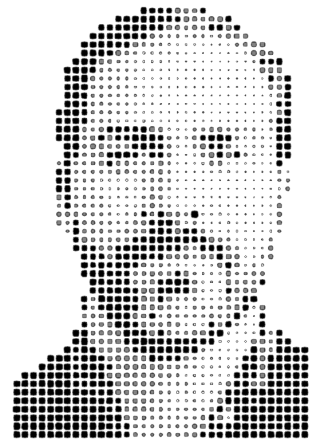Vision
The architect's profession has not changed, rather his relationship with tools and the ability to conceive new ones has changed. This paradigm shift has effects on the quality of his work and ultimately for the benefit that can be offered to the interlocutors, whether they are professionals or end-users
ENG – A computational designer in architecture is a professional who combines architectural design with skills in programming and computer science. This role is based on the use of digital tools and algorithms to assist in the design and creation of innovative architectural solutions. The computational designer uses specialized software and programming languages to create digital models and simulations that allow different design options to be examined and evaluated. This can include analyzing data, such as traffic flows or environmental conditions, to optimize a building’s efficiency and performance. Additionally, the computational designer may use algorithms and scripting to automate repetitive or complex tasks during the design process. This saves time and improves overall work efficiency. Another important aspect of the computational designer’s role is the exploration of new forms and architectural solutions through the use of generative algorithms. These algorithms allow for a variety of design options to be generated in a random or controlled way, which can be further analyzed and optimized by the designer.
In the field of computational design in architecture, there are several specializations concerning organic and rational parametric modeling, structural design, environmental design, topological manipulation in the mesh field, then there is the interactive design of microcontrollers and more. It is extremely unlikely that a computational designer will achieve top specialization in all of these fields. While it is difficult to achieve a sophisticated level of expertise in all areas of computational design, a computational designer with a solid foundation of generic-theoretical skills in each domain can successfully manage a wide range of workflows and skills, ensuring a holistic and innovative approach to architectural design. Also in this case the substantial difference lies in the level of soft skills that he has acquired over time.
In summary, the computational designer in architecture is a professional who combines architectural skills with computer skills to create innovative and technically optimized solutions. Use digital tools, algorithms, and specialized software to support the design process and tackle complex architectural challenges.
———
ITA – Un computational designer in architettura è un professionista che combina la progettazione architettonica con competenze nel campo della programmazione e dell’informatica. Questo ruolo si basa sull’utilizzo di strumenti digitali e algoritmi per aiutare nella progettazione e nella creazione di soluzioni architettoniche innovative. Il computational designer utilizza software specializzati e linguaggi di programmazione per creare modelli e simulazioni digitali che consentono di esaminare e valutare diverse opzioni di progettazione. Questo può includere l’analisi di dati, come flussi di traffico o condizioni ambientali, per ottimizzare l’efficienza e le prestazioni di un edificio. Inoltre, il computational designer può utilizzare algoritmi e scripting per automatizzare compiti ripetitivi o complessi durante il processo di progettazione. Ciò consente di risparmiare tempo e migliorare l’efficienza complessiva del lavoro. Un altro aspetto importante del ruolo del computational designer è l’esplorazione di nuove forme e soluzioni architettoniche attraverso l’uso di algoritmi generativi. Questi algoritmi consentono di generare una vasta gamma di opzioni di progettazione in modo casuale o controllato, che possono essere ulteriormente analizzate e ottimizzate dal designer.
Nell’ambito del computational design in architettura, esistono diverse specializzazioni che riguardano la modellazione parametrica organica e razionale, la progettazione strutturale, la progettazione ambientale, la manipolazione topologica in ambito mesh, esiste poi il design interattivo dei microcontrollori e altro ancora. É estremamente improbabile che un computational designer raggiunga la massima specializzazione in tutti questi campi. Pur essendo difficile raggiungere un livello di esperienza sofisticato in tutte le aree del computational design, un computational designer con una solida base di competenze generico-teoriche in ciascuno ambito può gestire con successo una vasta gamma di flussi di lavoro e competenze, garantendo un approccio olistico e innovativo alla progettazione architettonica. Anche in questo caso la differenza sostanziale sta nel livello di soft skills che egli ha acquisito nel tempo.
In sintesi, il computational designer in architettura è un professionista che combina competenze architettoniche con abilità informatiche per creare soluzioni innovative e ottimizzate dal punto di vista tecnico. Utilizza strumenti digitali, algoritmi e software specializzati per supportare il processo di progettazione e affrontare sfide complesse legate all’architettura.

Architect | PhD | Computational Designer | Environmental Designer
Chartered Architect
![]() ART (Authorized Rhino Trainer)
ART (Authorized Rhino Trainer)
No Data Found
Me
I am an Architect* and a PhD in Sustainable Technologies, Recovery and Representation of Architecture and the Environment at the University of Naples “Federico II” – DiARC (Department of Architecture).
I was born in Naples, graduated as a surveyor with honours, I live a “short” academic parenthesis of 5 years as a student of Aerospace Engineering at the University of Naples “Federico II”. Having supported more than 20 exams I decide to change air-enrolling at the Faculty of Architecture in Naples, where I graduated with honours with a thesis in environmental design and parametric design and its publication.
I am focused on Computational Design and Environmental Design.
I have had the opportunity to face and solve, according to a computational thinking approach, some design aspects of the Apple iOS Developer Academy of Naples (my PhD case history).
Latest
Environmental Design Analyst at Foster + Partners
- Environmental Design Analyst
- R&D
- Tools, Scripting & Coding improvements
- Often friend of beers =)
Previously
Architect ,Computational
Designer & Researcher for i-Mesh Architextile:
- Improve material performance management and simulation
- Workflow optimization from the design team to production
- Management of R&D activities with universities (POLIMI, Univ. Perugia, Univ. Camerino,
ILEK Stuttgart, Weißensee Kunsthochschule Berlin)
- Development of algorithms to calculate/analyze the material
performance
- POLIMi algorithm management for structural optimization
- Digitization / Render Viz of i-Mesh patterns,
- Parametric Environmental Design
[2018-2021] Active member of the Digital Architect B.I.M. commission of the Naples Architects Order “Ordine APPC di Napoli” (National Architects Register)
What I like
Operate in the field of design and construction without forgetting Climate & Human/Natural Environment, I like using methodologies based on the computational approach to technological design and diving into information modelling. This path consolidates a profile of skills that qualify an Architect as a computational + environmental designer.
I like solving challenges and developing new workflows/tools according to the team's requests/expertise.
I used a lot of different software such as Catia, AutoCAD, REVIT+Dynamo, Archicad, Rhino+Grasshopper (I am ART), 3D Studio Max, Cinema4D, V-Ray. About data Viz: Excel, Tableau Public, Power BI (Microsoft), Processing ..and many others… sometimes I like scripting and coding in C#/C++ and Python (GH).
Learning new methods/workflows and consequently new software tools as the work requires is a natural way of growing ourselves - I find it highly natural especially around the Rhino+Grasshopper environment (they are my natural habitat)
Anyway, soft skills make the difference
